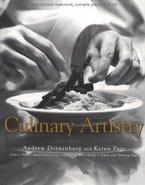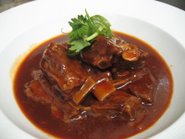The recent food hygiene scare in Singapore has sent many of us wondering just how safe is the food we eat and what kind of risk are we taking in consumption of raw, partially cooked foods. The health ministry has often urge us to cook everything thoroughly and properly before put it in our mouth or risk having to suffer from food poisoning due to contamination. While personal hygiene of the people who are preparing food cannot be compromised, there are still many other factors that can help prevent the risk of food poisoning in raw and partially cooked foods. If we have to eat everything thoroughly cooked, life would be so boring without a variety of taste and textures from different degrees of cooking. Think of a juicy pink reddish coloured roast beef at a well done stage instead of serving it medium. It would not only be an insult to the farmers who take pains to cultivate premium meat cattle, it is also as good as chewing on a piece of leather.
Before the age of refrigeration came by, chefs have known to utilize traditional methods of preservation and cooking to stabilize foods that we eat using naturally available preservatives like salt, vinegars and spices. Some of the classic dishes that we eat today have long been prepared with certain ingredients not only for taste and flavour reasons but food safety too. Some ingredients are able to help in holding prepared foods for a few days while others may allow longer periods of preservation in terms of months. Preservation with various types of ingredients can result in salty, spicy, sweet or sour taste sensations in the kind of foods we eat so it is up to the creative expertise of the chef to balance out taste on the palatte.
Some of the classic dishes that we eat today have long been prepared with certain ingredients not only for taste and flavour reasons but food safety too. Some ingredients are able to help in holding prepared foods for a few days while others may allow longer periods of preservation in terms of months. Preservation with various types of ingredients can result in salty, spicy, sweet or sour taste sensations in the kind of foods we eat so it is up to the creative expertise of the chef to balance out taste on the palatte.
Salt is the number one ingredient used in kitchens all over the world. Besides seasoning food, it is also used for the preservation of ingredients that allows them to be used during off season in availability. Think of salted vegetables, eggs and meats like air dried ham or seafood like our favourite salted fish cooked with bean sprouts and baccalao (Spanish style salted cod fish).
 A
A cidic ingredients like citrus fruits and vinegars also help to slow down bacteria growth in certain raw dishes that is a favourite of some cuisines. For example, “Ceiviche” is a popular dish in Latin American cuisine that uses high acidic citrus fruits like limes and lemons to “cooked” seafood without any heat processing at all. The acids in the fruit juices create an unfriendly environment for bacteria to grow rapidly, thereby keeping their numbers low so that the good bacteria which are natural antibodies in our digestive system have enough time to neutralize the toxicity of such foreign bacteria. This is the same when chefs serve wasabi with raw seafood and horseradish with roast beef on medium doneness.
cidic ingredients like citrus fruits and vinegars also help to slow down bacteria growth in certain raw dishes that is a favourite of some cuisines. For example, “Ceiviche” is a popular dish in Latin American cuisine that uses high acidic citrus fruits like limes and lemons to “cooked” seafood without any heat processing at all. The acids in the fruit juices create an unfriendly environment for bacteria to grow rapidly, thereby keeping their numbers low so that the good bacteria which are natural antibodies in our digestive system have enough time to neutralize the toxicity of such foreign bacteria. This is the same when chefs serve wasabi with raw seafood and horseradish with roast beef on medium doneness.  Besides having great flavour compatibility with the foods served, wasabi and
Besides having great flavour compatibility with the foods served, wasabi and  horseradish roots also contain isothiocyanates that gives their characteristically similarity in flavours together with other types of mustards and have beneficial effects such as inhibiting microbe growth.
horseradish roots also contain isothiocyanates that gives their characteristically similarity in flavours together with other types of mustards and have beneficial effects such as inhibiting microbe growth.
When it comes to sweet applications, many cakes and fillings can be easily contaminated if not handled properly and still result in food poisoning situations even if they don’t smell bad at all. W
W ith a desirable level of moisture in most pastry products especially cakes, chefs tend to add fruit or grain flavoured liquers not just for flavour, but also to stablise the products as these high alcohol flavoured liquers have the ability to kill bacteria. Think of a rum and marsala wine laden Tiramisu or a kirsch obsessed Bavarian Black Forest cake. Sure enough it tasted good when the pastry slid down your throat with all that nice alcoholic effect of warm sensations, but that is also an indication of the presence of alcohol that is enougn to retard and slow down any exisiting bacteria growth in the pastries being prepared.
ith a desirable level of moisture in most pastry products especially cakes, chefs tend to add fruit or grain flavoured liquers not just for flavour, but also to stablise the products as these high alcohol flavoured liquers have the ability to kill bacteria. Think of a rum and marsala wine laden Tiramisu or a kirsch obsessed Bavarian Black Forest cake. Sure enough it tasted good when the pastry slid down your throat with all that nice alcoholic effect of warm sensations, but that is also an indication of the presence of alcohol that is enougn to retard and slow down any exisiting bacteria growth in the pastries being prepared.
Before the age of refrigeration came by, chefs have known to utilize traditional methods of preservation and cooking to stabilize foods that we eat using naturally available preservatives like salt, vinegars and spices.
 Some of the classic dishes that we eat today have long been prepared with certain ingredients not only for taste and flavour reasons but food safety too. Some ingredients are able to help in holding prepared foods for a few days while others may allow longer periods of preservation in terms of months. Preservation with various types of ingredients can result in salty, spicy, sweet or sour taste sensations in the kind of foods we eat so it is up to the creative expertise of the chef to balance out taste on the palatte.
Some of the classic dishes that we eat today have long been prepared with certain ingredients not only for taste and flavour reasons but food safety too. Some ingredients are able to help in holding prepared foods for a few days while others may allow longer periods of preservation in terms of months. Preservation with various types of ingredients can result in salty, spicy, sweet or sour taste sensations in the kind of foods we eat so it is up to the creative expertise of the chef to balance out taste on the palatte.Salt is the number one ingredient used in kitchens all over the world. Besides seasoning food, it is also used for the preservation of ingredients that allows them to be used during off season in availability. Think of salted vegetables, eggs and meats like air dried ham or seafood like our favourite salted fish cooked with bean sprouts and baccalao (Spanish style salted cod fish).
 A
A cidic ingredients like citrus fruits and vinegars also help to slow down bacteria growth in certain raw dishes that is a favourite of some cuisines. For example, “Ceiviche” is a popular dish in Latin American cuisine that uses high acidic citrus fruits like limes and lemons to “cooked” seafood without any heat processing at all. The acids in the fruit juices create an unfriendly environment for bacteria to grow rapidly, thereby keeping their numbers low so that the good bacteria which are natural antibodies in our digestive system have enough time to neutralize the toxicity of such foreign bacteria. This is the same when chefs serve wasabi with raw seafood and horseradish with roast beef on medium doneness.
cidic ingredients like citrus fruits and vinegars also help to slow down bacteria growth in certain raw dishes that is a favourite of some cuisines. For example, “Ceiviche” is a popular dish in Latin American cuisine that uses high acidic citrus fruits like limes and lemons to “cooked” seafood without any heat processing at all. The acids in the fruit juices create an unfriendly environment for bacteria to grow rapidly, thereby keeping their numbers low so that the good bacteria which are natural antibodies in our digestive system have enough time to neutralize the toxicity of such foreign bacteria. This is the same when chefs serve wasabi with raw seafood and horseradish with roast beef on medium doneness.  Besides having great flavour compatibility with the foods served, wasabi and
Besides having great flavour compatibility with the foods served, wasabi and  horseradish roots also contain isothiocyanates that gives their characteristically similarity in flavours together with other types of mustards and have beneficial effects such as inhibiting microbe growth.
horseradish roots also contain isothiocyanates that gives their characteristically similarity in flavours together with other types of mustards and have beneficial effects such as inhibiting microbe growth.When it comes to sweet applications, many cakes and fillings can be easily contaminated if not handled properly and still result in food poisoning situations even if they don’t smell bad at all.
 W
W ith a desirable level of moisture in most pastry products especially cakes, chefs tend to add fruit or grain flavoured liquers not just for flavour, but also to stablise the products as these high alcohol flavoured liquers have the ability to kill bacteria. Think of a rum and marsala wine laden Tiramisu or a kirsch obsessed Bavarian Black Forest cake. Sure enough it tasted good when the pastry slid down your throat with all that nice alcoholic effect of warm sensations, but that is also an indication of the presence of alcohol that is enougn to retard and slow down any exisiting bacteria growth in the pastries being prepared.
ith a desirable level of moisture in most pastry products especially cakes, chefs tend to add fruit or grain flavoured liquers not just for flavour, but also to stablise the products as these high alcohol flavoured liquers have the ability to kill bacteria. Think of a rum and marsala wine laden Tiramisu or a kirsch obsessed Bavarian Black Forest cake. Sure enough it tasted good when the pastry slid down your throat with all that nice alcoholic effect of warm sensations, but that is also an indication of the presence of alcohol that is enougn to retard and slow down any exisiting bacteria growth in the pastries being prepared.








.jpg)
















































































